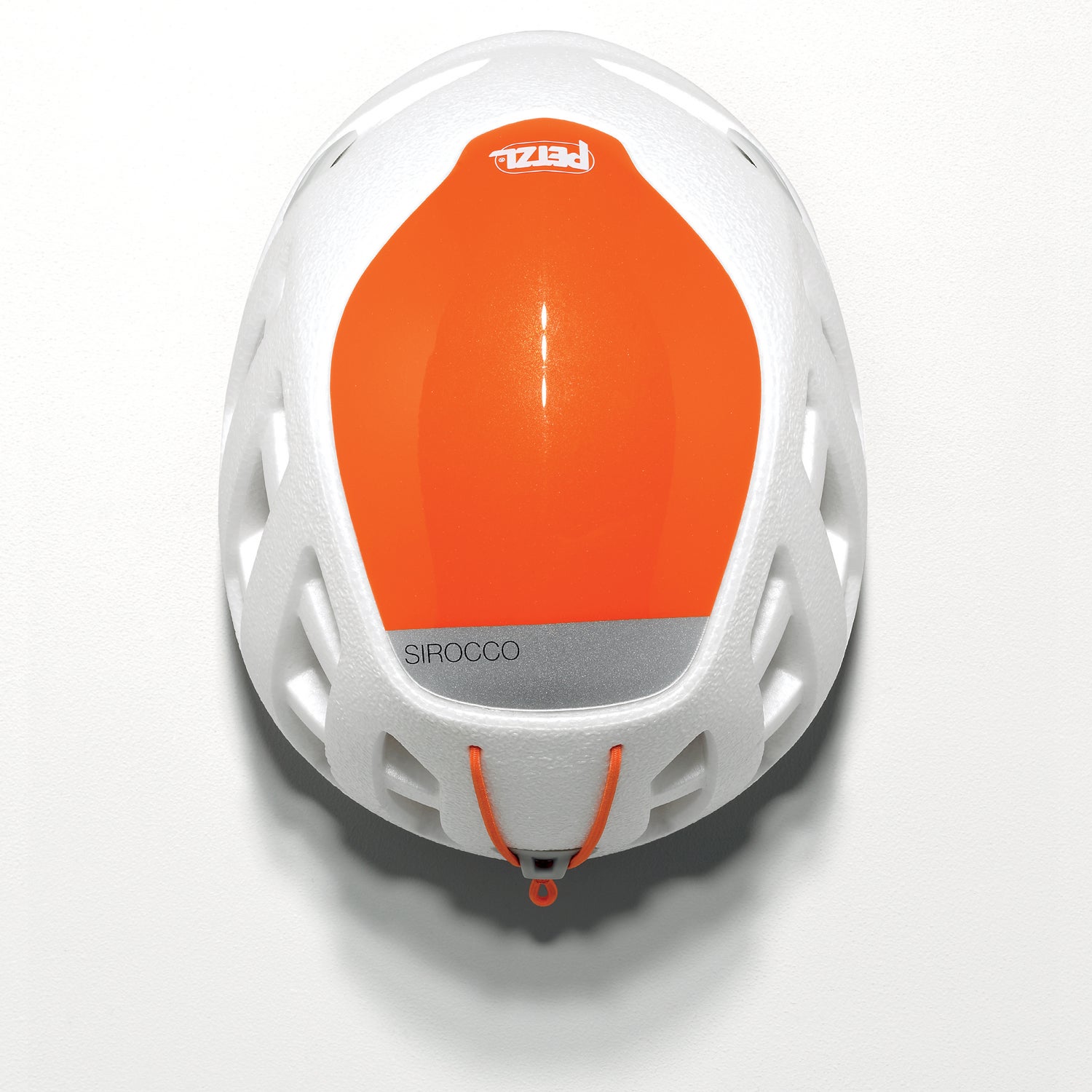Just remember one thing: it’s all about fit.
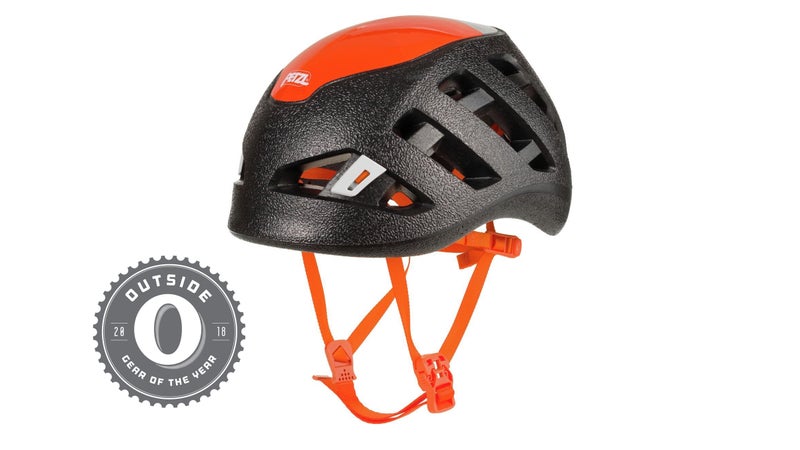
Petzl Sirocco ($130)
Stop thinking of helmets as accessories. They are crucial tools that have gotten so many major upgrades in the past few years it’s hard to keep track of them all. Take the new Sirocco. Weighing in at about a third of a pound, Petzl’s new lid is the lightest one we’ve ever tested. It’s also one of the most breathable, with an astonishing 24 vents. “I forgot I was wearing a helmet!” exclaimed one tester after summiting Mount Shasta on an 80-degree day. There’s not much to this helmet, with its single-strap fit system and bare-bones EPP foam, but it has full safety ratings for climbing—though not downhill skiing. It’s best suited to mountaineers who put a premium on head protection during the ups and need just the minimum to get down. If that doesn’t sound like your average ski day, have no fear: there are loads of other, more versatile lids on the next two pages. Read this, try on your favorites in a store, then hit the mountain. Simple, really.
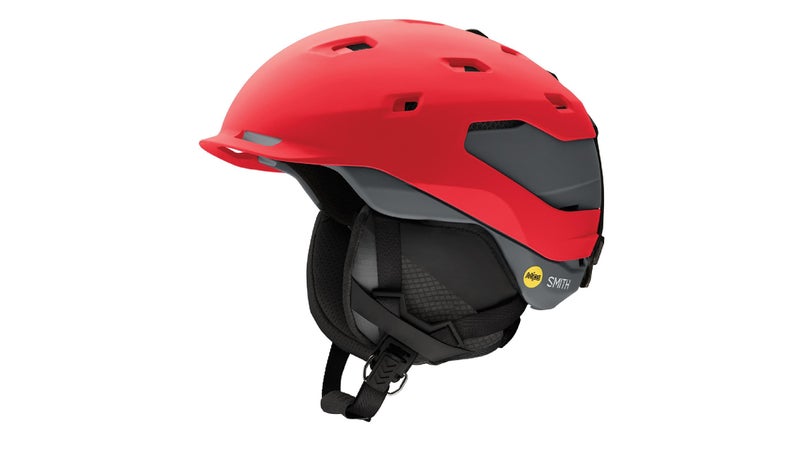
Smith Quantum MIPS ($300)
Best For: Doing everything well. Very nearly our Gear of the Year winner.
The Test: Smith subtly integrated a remarkable number of features into this helmet. With its extremely intuitive magnetic strap connector that closes easily with one hand and its supremely well-fitting Boa tightening system, the Quantum seemed to work with us as we skied, not just sit on top of our heads like a lifeless husk. The liner is made from an airy honeycomb material, called Koroyd, that breathed well; coupled with the 22 vents, it was comfortable even on sweaty backcountry tours. Finally, we loved the low-profile, simple look.
The Verdict: An overachieving helmet that earns top marks in all categories.
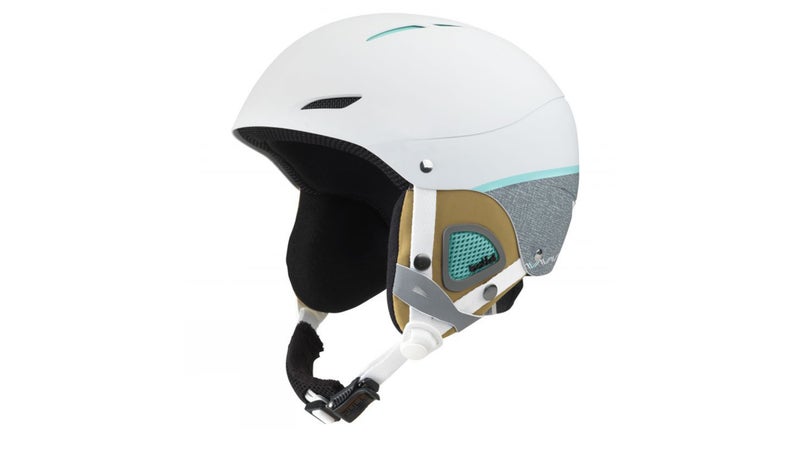
Bollé Juliet ($100)
Best For: Lady park rats.
The Test: This helmet makes a bold statement, with swaths of street-style graphics and fun details like faux-cork accents and bold pops of salmon along the sides and back. The thick furlike interior was among the plushest and warmest of any of the helmets we tested, making this the number-one pick for those whose ears run cold: it’s good to well below 30 degrees. That fuzzy lining, plus the limited vents (six small, adjustable ones on top), made this Bollé entirely too hot for spring skiing, but we broke it out almost every day during the heart of winter, especially for big storms.
The Verdict: With its lining—and its looks—you’ll overheat in the best way.
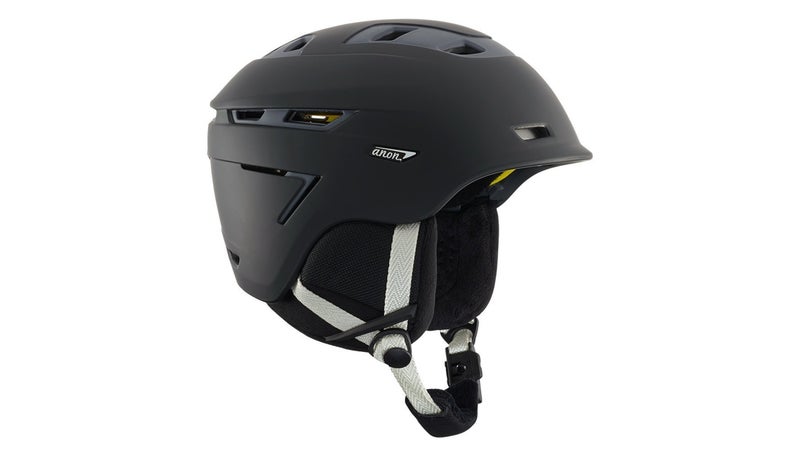
Anon Omega ($150)
Best For: Riding under the radar.
The Test: The solid workhorse of this page, the Omega manages to balance maximum coverage and serious protection with a handsome, muted style. Testers appreciated the safety details—this lid extends lower than most of the other helmets we’ve worn, with a tight Boa ratcheting fit and optional MIPS tech inside (get it for another $40). In the same best-of-both-worlds vein, testers found it plenty breathable on warm spring resort days in spite of that full coverage and plenty of insulation. Credit goes in part to the 15 adjustable vents on the top and sides.
The Verdict: A just-right mix of safety and style.
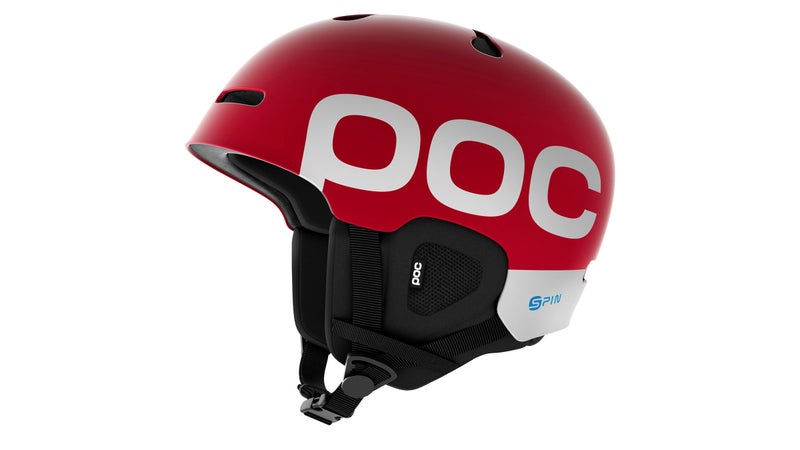
POC Auric Cut Backcountry SPIN ($220)
Best For: Hitting backcountry kickers.
The Test: The newest addition to the Auric family combines the line’s simple park-rat styling with some sophisticated under-the-lid tech. This helmet is built around POC’s brand-new patent-pending safety design, called SPIN, which is basically a few small pads set under the plastic exterior that help the lid diffuse the rotational impacts that happen in a crash. Think MIPS 2.0. That tech, plus the multi-impact EPP foam interior, made us feel super confident ripping through hot spring corn and over booters in the rugged Siskiyou Mountains.
The Verdict: Evolve past the park, but hold on to the style.
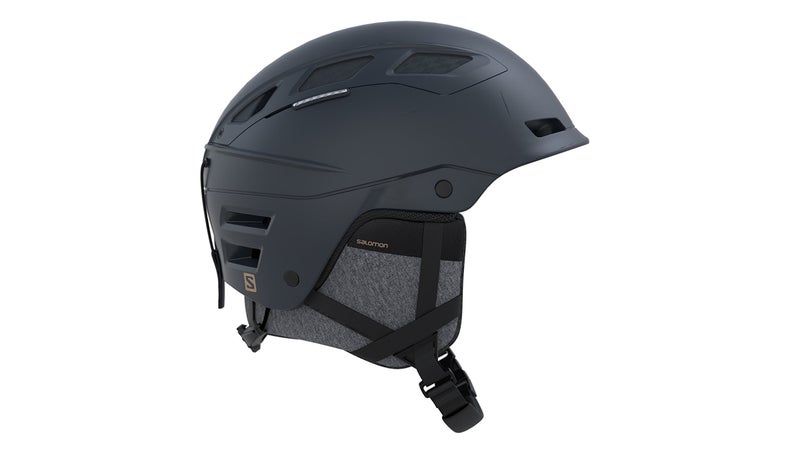
Salomon QST Charge ($200)
Best For: The backcountry curious.
The Test: The QST walks the line between resort and backcountry lid. It’s got plush details—like a merino wool liner that envelops the fit system and a strap with its own super-soft cover—that add weight but boost comfort. Thanks to the honeycombed interior, freestyle low profile, and ample venting, it’s light and cool enough for backcountry tours, too. “It’s the perfect lightweight helmet for days in the twenties and thirties,” one tester said.
The Verdict: The best option for those who go 50/50 between the resort and backcountry.
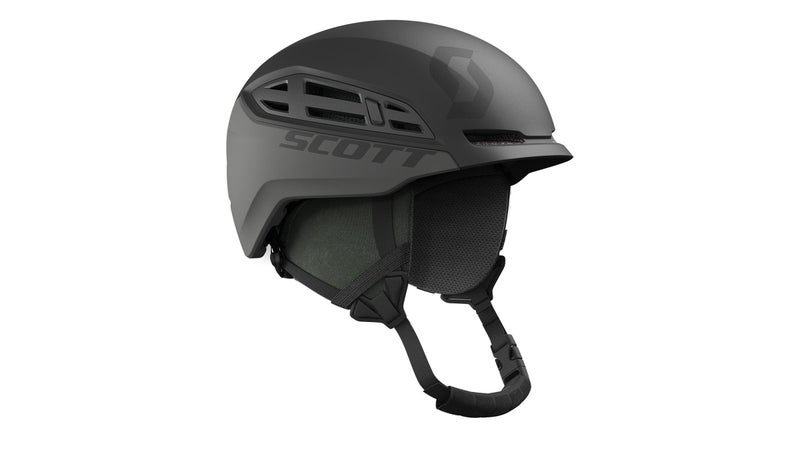
Scott Couloir II ($180)
Best For: Going up.
The Test: “This is the only helmet I would take in the backcountry, for two reasons,” said one tele-skiing tester. Number one: insane breathability, thanks to six vents on each side. Open them and you feel like your head’s getting air-conditioned. Close them and this helmet gets warm enough for a 33-degree day with sleet. Number two: weight. With the svelte profile of a bike helmet and a thin foam liner, Scott cut ounces all the way down to 13—lighter than any other ski helmet in our test.
The Verdict: Our favorite touring lid, it’s light yet burly. Best for those who play primarily in the backcountry.


